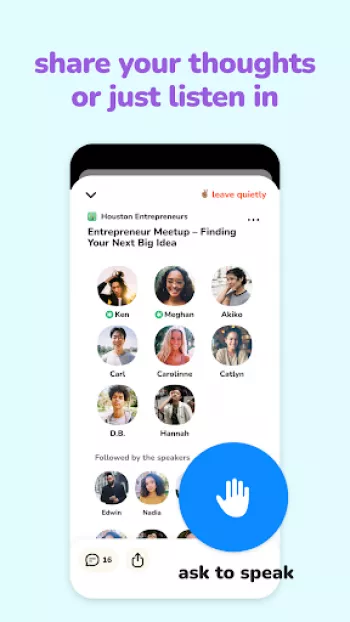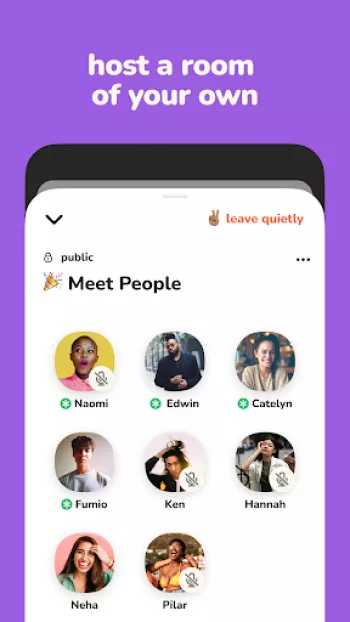Apps Zone

The Rise of Instant Voice Networking
In the digital age, communication has evolved from text and images to instantaneous voice interaction, a trend epitomized by platforms such as Clubhouse. Instant Voice Networking has surged in popularity as people crave authentic and spontaneous human connection unhindered by the boundedness of text. The concept is straightforward yet transformative: using real-time voice chats to emulate the spontaneity of face-to-face conversations in a virtual realm. This approach eradicates the traditional barriers associated with geographical distances, enabling people from diverse backgrounds to engage in dialogue as if they were in the same room. Unlike text messages or emails, voice interactions convey emotions and subtleties that are often lost otherwise. For instance, a pause, a change in tone, or a laugh can convey meaning beyond words. This richness enhances understanding and builds a sense of community. Moreover, the informal and less permanent nature of voice interactions can foster a relaxed atmosphere where participants feel more at ease sharing their thoughts candidly. As technologies continue to improve, with voice recognition and processing becoming faster and more accurate, instant voice platforms have the potential to transform personal, educational, and business communications. They open new horizons for broadcasters, educators, and entrepreneurs to connect with audiences in ways that mimic live discussions, complete with the energy and unpredictability of spontaneous conversation.
Technology Behind Real-Time Voice Platforms
Behind the seamless operation of real-time voice platforms like Clubhouse lies a complex array of technologies that ensure crisp, immediate, and clear audio communication. The cornerstone of these platforms is Voice over Internet Protocol (VoIP), which allows vocal communications to traverse the Internet as data packets. Unlike traditional telephony, VoIP offers the flexibility to integrate with various digital platforms, making it versatile for both developers and end-users. The technology relies on codecs, which compress voice signals into data packets before transmission and then decompress them at the receiving end. This process must occur rapidly to ensure minimal latency, thus maintaining the flow of conversation. Moreover, error correction mechanisms are pivotal, as they detect and rectify packet loss or jitter, which can disrupt the audio stream. Real-time Transport Protocol (RTP) is another critical component, facilitating the delivery of audio, video, and other streaming media over IP networks. It works alongside protocols like Session Initiation Protocol (SIP) to establish and terminate communication sessions, thus allowing for dynamic interaction between users. The rise of cloud computing has further enriched these platforms by providing scalable resources for streaming large volumes of data. Modern advancements in artificial intelligence and machine learning also contribute significantly, especially in areas such as noise cancellation and voice quality enhancement. As the demand for instant connections grows, these technologies will inevitably push boundaries further, aiming for even greater realism and immersion in virtual networking environments.
Societal Impacts and Implications
The advent of Instant Voice Networking carries profound implications for society, influencing how people connect, collaborate, and communicate. This modality reshapes social interaction by offering a platform where voices can unite across miles, leading to the democratization of discussion and the fostering of global communities. Communities once bound by geographical and cultural confines can now transcend these barriers and engage in dialogue centered on shared interests and common goals. This has led to a diversification in discourse, as participants bring varied perspectives to the table, enriching debates and promoting intercultural understanding. However, the rise of these platforms also brings forth new challenges, including concerns about privacy and data security. As with any internet-based service, the potential for misuse exists, necessitating stringent safeguards to protect user information and ensure transparency about data usage. Moreover, the ephemeral nature of voice interactions raises questions about accountability, as spoken words cannot be archived as easily as text. There's also the phenomenon of 'social fatigue,' as relentless connectedness can blur boundaries between personal and public life, leading to burnout. Despite these challenges, the overall impact remains positive, as Instant Voice Networking provides an avenue to harness human creativity and conversational intelligence, nurturing innovation and forging connections that might otherwise remain impossible.
Challenges and Considerations in Instant Voice Networking
While Instant Voice Networking opens up new realms of connectivity, it also encounters several technical, social, and ethical challenges that need careful consideration. Technically, ensuring robust quality of service (QoS) is paramount, as poor audio quality can hinder communication and degrade user experience. Achieving low latency and high reliability requires constant internet connectivity and substantial backend infrastructure capable of scaling to accommodate sudden spikes in user activity. Moreover, data transmission in real-time demands rigorous security measures to protect against breaches and attacks that could compromise user privacy. Socially, it's crucial to tackle issues such as online harassment and misinformation, which can thrive in unregulated conversational environments. Platforms must adopt policies and technologies like artificial intelligence to moderate discussions and uphold community standards. Ethically, there's a need for transparency regarding data usage, consent, and the implications of digital footprints left behind in voice exchanges. Users should be informed and consent to how their data is being used, shared, and possibly monetized. Finally, inclusion is an essential consideration, as technological adoption varies, and many regions still experience disparities in digital access. Bridging this digital divide ensures equitable participation, allowing all voices to be heard and valued in this burgeoning communicative frontier.
Exploring the Future of Voice Networking
The future of Instant Voice Networking promises exciting developments that could redefine how we perceive and interact with the world. With emerging technologies in artificial intelligence and machine learning, voice platforms may soon offer real-time language translation, breaking down language barriers and facilitating truly international dialogues. Imagine a global meeting where participants speak their native languages, yet all understand each other perfectly, reducing the friction often associated with cross-border interactions. Additionally, as virtual reality (VR) and augmented reality (AR) technologies advance, we could see the integration of voice platforms within immersive environments, allowing users to engage in lifelike interactions within digital spaces. Such advancements have vast implications for education, as students and educators will be able to partake in interactive, voice-driven learning experiences without geographical constraints. Moreover, the professional world could witness a shift in collaboration, as voice networking offers flexible, immediate, and inclusive communication channels. While technological strides propel these possibilities, they also require thoughtful regulation and ethical frameworks to ensure that the innovations serve humanity positively. As the industry continues to evolve, users can expect more refined and sophisticated voice networking solutions tailored to diverse needs and preferences, ultimately leading to a more interconnected and communicative global society. Currently, users can join platforms like Clubhouse directly through Download for Android and Download for iPhone, allowing them to experience the nascent stages of this transformative shift firsthand.
Share Your Opinion
Your Email Will Not Be Published.
All Rights Reserved © Apps Zone 2025







































Trang Quỳnh
I was happy to see CH come out for Android, and have been enjoying the content, learning how to work the app, etc. My biggest issue is that when I ...
Ken Belangel
Bad news first, this app actually limits the amount of messages you can send to people you want to support and connect to and that's a huge turn of...
Garrett Brown
A few issues have come up since the chat feature was introduced. Holding the speak button to talk is hard to do for people with moader issues. My h...
Lisa Kendall Consulting LLC
I was happy to see CH come out for Android, and have been enjoying the content, learning how to work the app, etc. My biggest issue is that when I ...
Yvonne Armour-Sigars
I love the way you are able to connect with people across the world. Our room 'Wisdom for Life' has been life changing. The part that is disappoint...